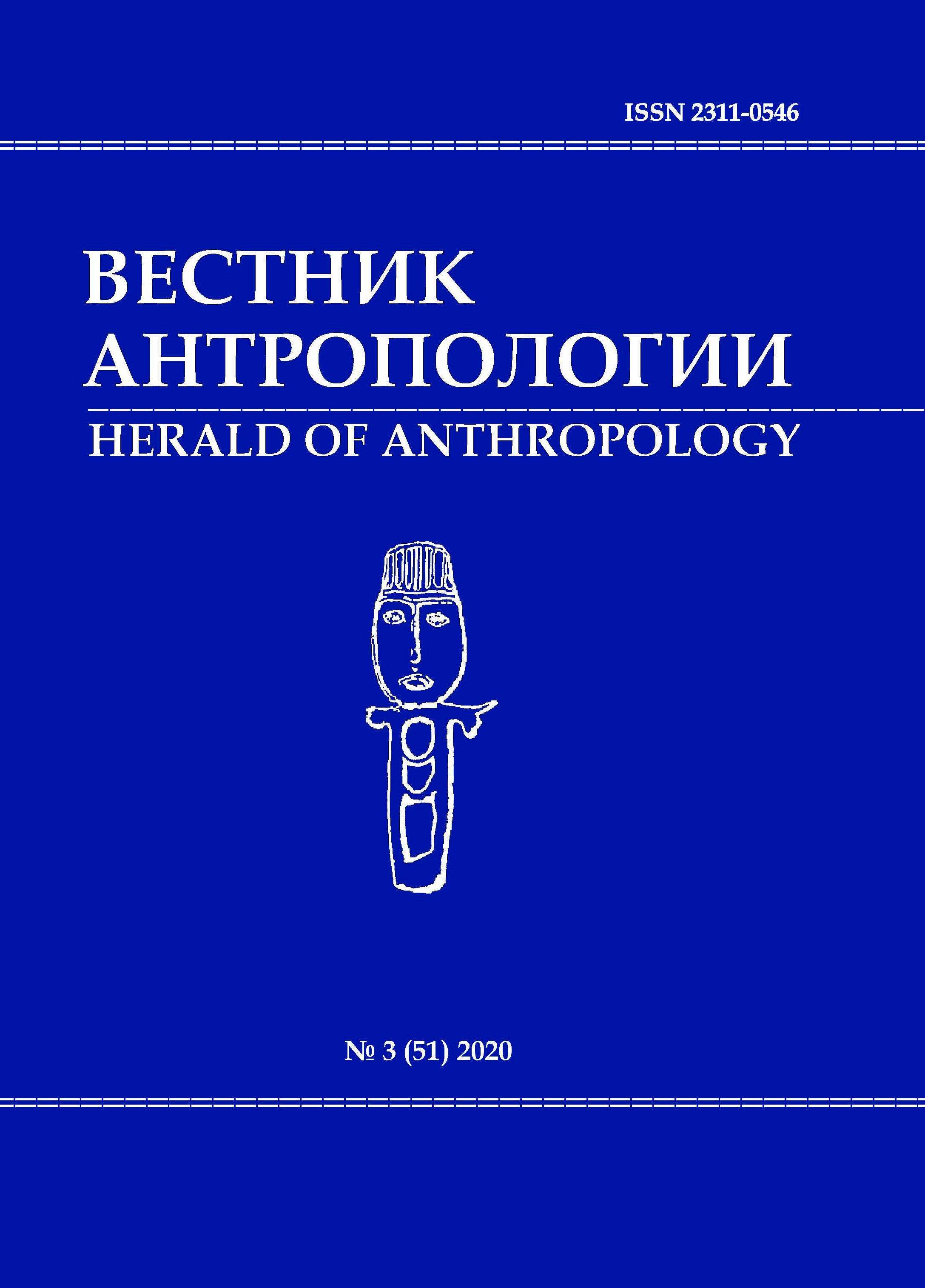The Place Of The Indigenous Peoples Of Argentina In The Processes Of State And National Construction
DOI: 10.33876/2311-0546/2020-51-3/182-195
Keywords:
Indian question, “civilization and barbarism”, “desert” as a concept and metaphor, space construction, national-cultural identity, southern border factor, biological determinismAbstract
The article analyses the stages of consolidating the peripheral position of indigenous peoples among the State priorities of the Argentine Republic, aimed at consolidating the state and creating a national identity. It was shown that during the colonial period their integration and assimilation into socio-economic and political processes were limited both by the communities themselves and by the colonial authorities. Since Argentina’s independence, the territories of the traditional residence of autochthonous groups became the object of state policy and are consistently excluded from the national political agenda. A wide arsenal of means is used – from equipping military expeditions to launching ideological and propaganda campaigns in the country and beyond.
References
- Adamovski, E. 2013. Kul'turnye, etnograficheskie i klassovye aspekty stanovleniia argentinskoi gosudarstvennosti [Cultural, ethnographic and class aspects of the formation of Argentine statehood]. Latinoamerikanskii istoricheskii al'manakh 13: 122–144.
- Ashley, K. 2017. From Savagery to Sovereignty: Identity, Politics, and International Expositions of Argentine Anthropology (1878–1892). In Isis 1 (March). https://doi.org/10.1086/691395 (accessed 25.06.2019).
- Delrio, W., D. Lenton, M. Musante and M. Nagy. 2010. Discussing Indigenous Genocide in Argentina: Past, Present, and Consequences of Argentinean State Policies toward Native Peoples. In: Genocide Studies and Prevention: An International Journal 5 (2): Article 3. http://scholarcommons.usf.edu/gsp/vol5/iss2/3 (accessed 25.06.2019).
- Ermolaeva, V.I. (ed.), N.M. Lavrova and A.I. Shtrakhova. 1961.Ocherki istorii Argentiny [Essays on the history of Argentina]. Moscow: Nauka.
- Fontán, M. 2019. Genocidio de los pueblos indígenas y desaparición cultural de la generación americanista de la Independencia: Punto final? [Genocide of indigenous peoples and cultural disappearance of the Americanist generation of Independence: End point?] http://conti.derhuman.jus.gov.ar/2011/10/mesa_6/fontan_mesa_6.pdf (fecha de acceso 25.06.2019).
- Giordano M. 2009. Nación e identidad en los imaginarios visuales de la Argentina. Siglos XIX y XX. [Nation and identity in the visual imaginaries of Argentina]. ARBOR Ciencia, Pensamiento y Cultura. noviembre-diciembre. doi: 10.3989/arbor.2009.740n1091 Pр. 1284–1288. (fecha de acceso 25.06.2019).
- Goncharova, T.V. 1993. Avtokhtonnoe kul’turnoe nasledie kak baza endogennogo razvitiia [Autochthonous Cultural Heritage as a Base for Endogenous Development] In Sbudutsia li prorochestva? Latinskaia Amerika: indeitsy i obshchestvo. [Will the Prophecies Come True? Latin America: Indians and Society], edited by Yu.A. Zubrickiy, 106–129. Moscow: ILA.
- Ivanovskiy Z.V., Yu.A. Zubritskiy, A.N. Glinkin et al. 2003. Razdelennost’ etnosa v kontekste mezhdunarodnykh otnoshenii [Separation of ethnos in the context of international relations]. Latinskaia Amerika 2: 49–64.
- Kazakov, V.P. 2014. Argentinskii iakobinets Mariano Moreno [Argentine Jacobin Mariano Moreno]. Latinskaia Amerika 12: 53–61.
- Kazakov, V.P. 2015. Ideologi Maiskoi revoliutsii v Argentine [Ideologues of the May Revolution in Argentina]. Latinoamerikanskii istoricheskii al’manakh 15: 21–48.
- Larin, E.A. (ed.). 2010.Istoriia Latinskoi Ameriki v mirovoi istoricheskoi i obshchestvennoi mysli XVI–XIX vv. [History of Latin America in world historical and social thought of the 16th–19th centuries]. Moscow: Nauka.
- Larin, E.A. (ed.). 2012. Politicheskaia istoriia stran Latinskoi Ameriki v XIX veke [Political history of Latin American countries in the 19th century]. Moscow: Nauka.
- Navarro, F.P. 2005. La conquista de la memoria: La historiografía sobre la frontera sur Argentina durante el siglo XIX. [The conquest of memory: Historiography on the southern Argentine border during the 19th century] Universum (Talca) 20 (1): 88–111. https://dx.doi.org/10.4067/S0718-23762005000100007 (fecha de acceso 25.06.2019).
- Rakuts N.V. 2018. Argentina [Argentina] In: Kul’tura indeiskikh narodov i politika gosudarstva. Iuzhnoamerikanskie realii [Indian culture and state policy. South American realities], edited by Ya.G. Shemiakin, 130–140. Moscow: ILA RAN.
- Rakuts, N.V. 2009. Indeiskie iazyki Iuzhnoi Ameriki [Indian languages of South America]. Latinskaia Amerika 5: 94–100.
- Selivanov, V.N. Kul’tura kolonial’noi Argentiny [Colonial Argentina culture] In:, (ed). Kul’tura Argentiny [Argentina culture], edited by N.G. Beley, 9–25. Moscow: Nauka.
- Sheinbaum, L.S. 1981. Argentina. Osobennosti formirovaniia i razvitiia natsii. [Argentina. Features of the formation and development of the nation] In Etnicheskie protsessy v stranakh Iuzhnoi Ameriki [Ethnic processes in the countries of South America], edited by I.F. Horoshayeva, and E.L. Nitoburg, 262–312. Moscow: Nauka.
- Sheinbaum, L.S. 1985. Indeitsy toba Argentiny [Toba Indians of Argentina]. In Istoricheskie sud’by amerikanskikh indeitsev. Problemy indeanistiki [Historical destinies of American Indians. Problems of Indian Studies], edited by V.A. Tishkov, 242–252. Moscow: Nauka.
- Subichus, B.Yu. 1977. Iz istorii argentinskoi literatury 16–19 vekakh [From the history of Argentine literature of the 16–19 centuries] In Kul’tura Argentiny Argentiny [Argentina culture], edited by N.G. Beley, 26–59. Moscow: Nauka.
- Navarro, F.P. 1999. Un país sin indios. La imagen de La Pampa y La Patagonia en la geografía del naciente Estado argentino [A country without Indians. The image of La Pampa and Patagonia in the geography of the nascent Argentine State]. Scripta Nova. Revista Electrónica de Geografía y Ciencias Sociales. Universidad de Barcelona 51 (1) de noviembre. http://www.ub.edu/geocrit/sn-51.htm (fecha de acceso 25.06.2019).
- Quijada, M. 2000. Nación y Territorio: La dimensión simbólica del espacio en la construcción nacional argentina. Siglo XIX [Nation and Territory: The symbolic dimension of space in Argentine national construction. XIX century]. Revista de Indias LX (219). URL: revistadeindias.revistas.csic.es/index.php/revistadeindias/article/view/511 (fecha de acceso 25.06.2019).
- Trinchero, H.H. 2006. The genocide of indigenous peoples in the formation of the Argentine Nation-State. Journal of Genocide Research 8(2), June: 121–135. doi: 10.1080=14623520600703008 (accessed 25.06.2019).
- Trinchero, H.H. 2014. Pueblos indígenas, estados nacionales y fronteras: tensiones y paradojas de los procesos de transición contemporáneos en América Latina. [Indigenous peoples, nation states and borders: tensions and paradoxes of contemporary transition processes in Latin America]. 1a ed. – Ciudad Autónoma de Buenos Aires: Editorial de la Facultad de Filosofía y Letras Universidad de Buenos Aires.





















